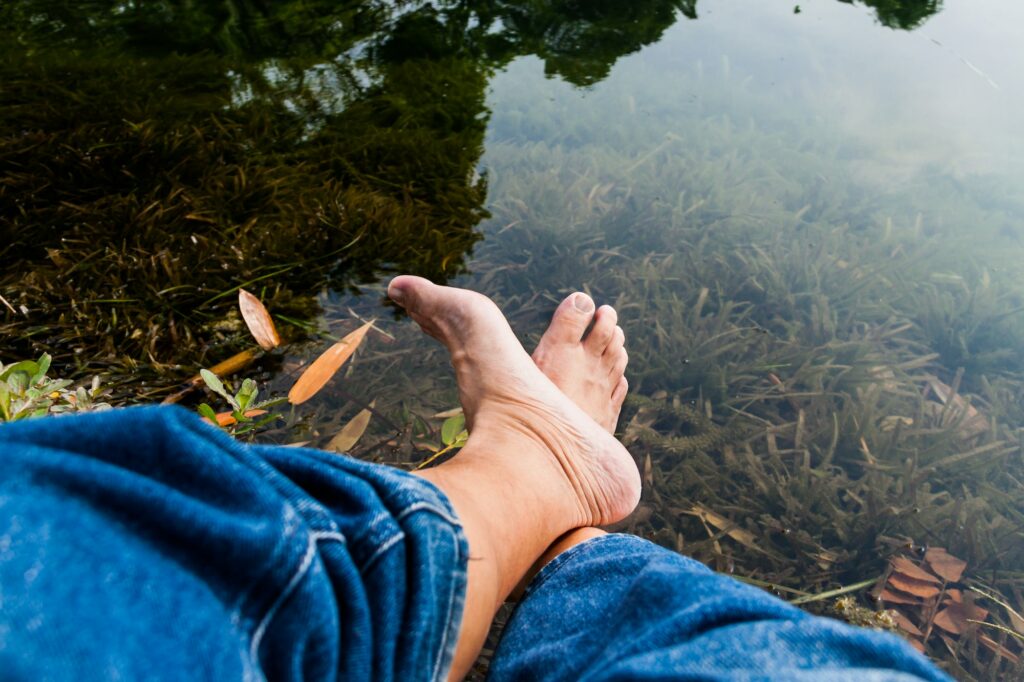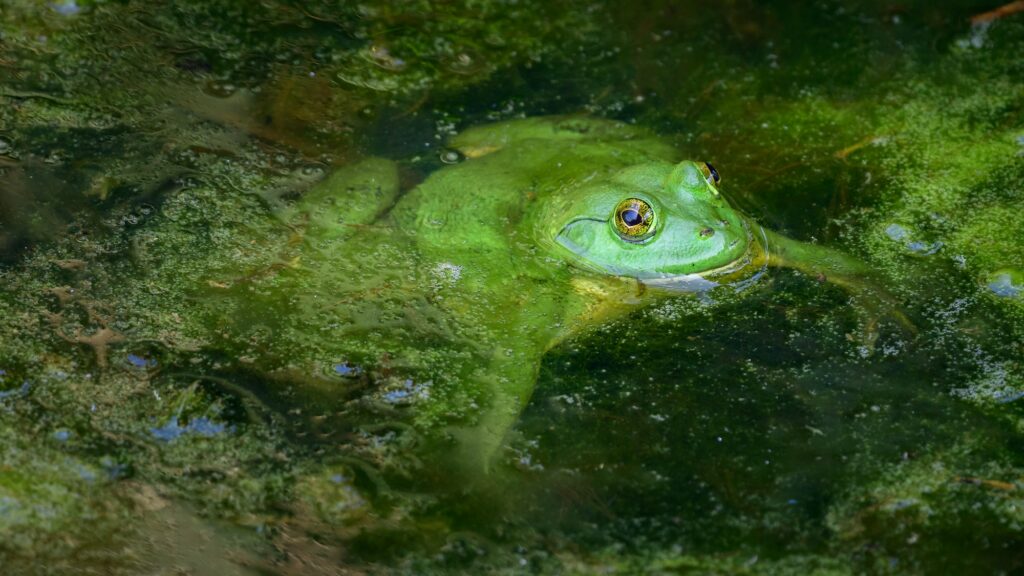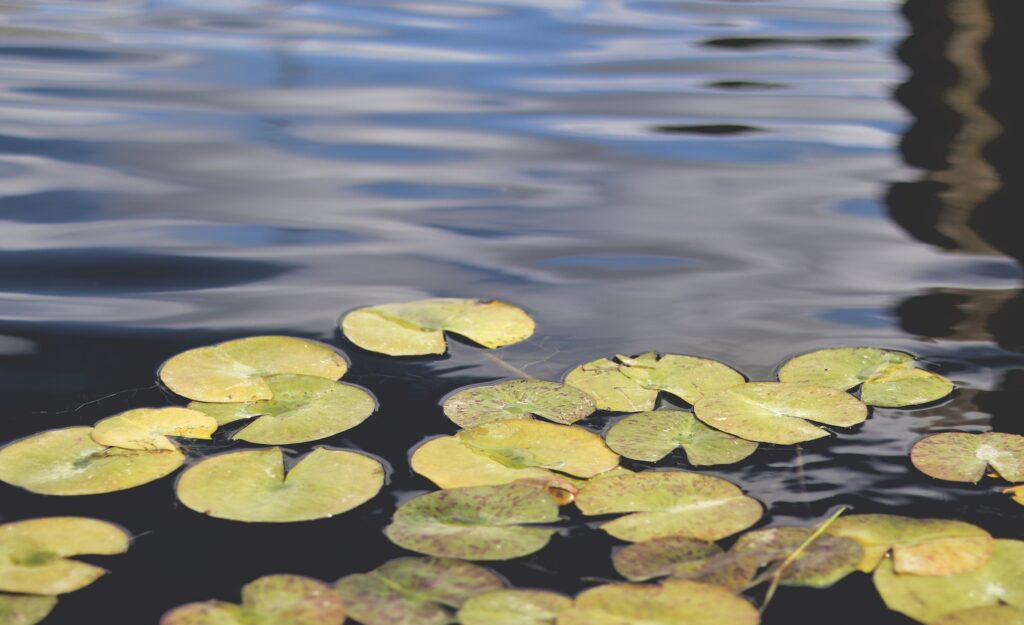Controlling pond weeds is crucial for maintaining the health and beauty of your pond or lake.
Some of the links in this article may be affiliate links. If you make a purchase through these links, we may earn a small commission at no extra cost to you. Thank you.
Weeds can be a major hassle for pond owners, causing inconvenience and trouble.
Fortunately, there are effective methods available to tackle these pesky plants. It’s important to consider the type of weed and the size of your pond when choosing a control method. Physical, chemical, and biological approaches can all be employed.
Remember to carefully read and follow the directions on product labels before using any method. Regular maintenance and monitoring play a vital role in preventing the growth and spread of pond weeds.
Understanding the Basics of Pond and Lake Weed Control
The first step is to identify the weeds. There are three major types of weeds: floating, submerged, and emergent.
Type 1: Emergent Weeds
A floating weed is one that is found near the bottom of the pond. These weeds are typically rhizomes and can be removed by cutting, skimming, and pulling. It is also possible to use a chemical treatment to remove floating weeds.
A rhizome is a root that extends to the pond’s bottom. In addition, some weeds have a tuft of leaves that are visible above the water.
String algae is a common weed that resembles strings. Its main function is to trap organic debris. It is usually easy to control.

A UV Clarifier is a great way to control algae. They are harmless to fish and other plants and reduce the amount of sunlight available to the algae.
A weed cutter is a good tool for removing dead plant material and sludge. The rake or a net can be used for weeds that grow too tall. A weed cutter can be especially useful in the case of a lily or duckweed that is blocking sunlight from reaching the fish.
There are a variety of products on the market today that are specifically designed to control weeds in ponds. Most products have been approved by the EPA and have been tested to ensure they are safe.
Type 2: Algae
Using algae to control pond and lake weeds is an inexpensive and effective solution. While some algae can be harmful, others are safe for humans and wildlife. It is important to know the differences between these types of algae before you begin treatment.

There are two main types of aquatic weeds: submerged and floating. The former is generally found in shallow water. They grow on the bottom and have soft stems. They can be treated by cutting or applying herbicide. They tend to be easier to manage than emergent weeds.
During the summer, a fertilization program stimulates the growth of plankton algae. This algae shades the bottom of the pond and prevents the growth of rooted aquatic weeds.
The best time to use algae to control pond and lake weeds is early in the season before plankton algae have had a chance to establish themselves. Some dye products are also available to control algae. These are non-toxic water-soluble dyes that color the water to prevent sunlight from reaching the weeds.
Depending on your location, you may need to use multiple management methods. These methods include mechanical, biological, and chemical. Depending on the weeds in your pond, you may need to treat half of the pond at a time.
Water plants are another source of nuisance in lakes and ponds. They can interfere with your enjoyment of the pond or can even harm your fish and other aquatic creatures.
Type 3: Floating Weeds
Floating weeds are common nuisances and can block sunlight from reaching the bottom of the pond. Fortunately, there are many ways to remove these unwanted plants. The type of weed you have will determine the best method.

For the most part, you can eliminate aquatic weeds by removing the leaves and roots. You can also apply herbicides to treat the weeds. However, this method should be used last on your list of options.
In addition, if you are using a commercial herbicide applicator, they will be able to help you select the right chemical for your needs. They can also help you calculate the dosage rate. Depending on the location, some herbicides may be illegal.
During the summer, you can use fertilization to control weeds. This will stimulate the growth of plankton algae, which is beneficial to the fish in the pond. The algae will prevent the weeds from establishing themselves. If you do decide to use this method, you should not fertilize with toxic blue-green algae blooms.
You can also remove weeds by hand. This method is only effective on small numbers of weeds near the shoreline. You will need waders and gloves to effectively remove these plants. You will also want to use a rake to reach weeds that are farther out.
You can also use a granular herbicide. This method is easier to manage. The herbicide sinks directly into the weed bed.
Type 4: Submerged Weeds
Managing weeds in ponds and lakes is one of the important parts of pond and lake maintenance. While ponds and lakes require some aquatic plants to maintain their productivity and aesthetics, excessive vegetation and weeds can be problematic. Choosing the correct weed control method is important to protect the wildlife in a pond.
Several types of weeds can cause problems. These include emergent and submerged weeds. Floating weeds and non-native submerged weeds can grow rapidly and reproduce quickly. These weeds can also cause damage to fish. Luckily, there are some effective weed control methods that can help you keep your pond free of unwanted weeds.
There are two main ways to treat floating weeds. First, you can use a herbicide to kill them. Secondly, you can cut them off. Cutting them off can be done using a sharp knife or ropes. Aeration can also help prevent the growth of weeds.
A good guide to submerged weeds is to look for flowers, leaves and stems above the water. Depending on your pond, you can use a liquid, granular, or translocated herbicide to control the weeds.
Common submerged weeds include Eurasian Watermilfoil, American pondweed, curly-leaf pondweed, and Hydrilla. These weeds have soft, thick stems and are commonly found below the surface of the water.
Algae is another type of weed. It’s a slime that grows on the water’s surface. The dissolved oxygen concentrations tend to be lower in these waters, which means the fish will have a hard time swimming.
Other Kinds of Weeds
Keeping your pond and lake weed-free can be a challenge. However, there are several ways to get rid of them for cheap. These methods will vary depending on the size and nature of your pond. They also depend on the species of weeds you have.
The best way to control weeds in your pond is to be proactive. By removing dead organic material and preventing runoff from entering the pond, you can minimize the number of weeds that will grow.

Herbicides can be used to kill pond weeds. They come in both liquid and solid form. They should be applied properly. You should always follow the manufacturer’s instructions. It’s a good idea to treat a small portion of your pond at once.
Another option is to use natural microbes. These will help to break down algae without hurting the quality of the water. It’s also a good idea to remove the dead algae as soon as possible.
A rake can be used to clear the surface of your pond. You can extend the rake into the water to reach weeds that are farther out.
You can also use a weed cutter. These are long-handled tools with V-shaped blades. They often come with ropes attached. You can bring the cutter back with you after removing the weeds.
You can also get rid of weeds that are too tall by pulling them out. They can be hand-picked or dragged through the water.
Controlling Aquatic Weeds
Whether you’re in the planning stages of developing an aquatic garden or just need a weed control strategy for your existing pond or river, there are a number of considerations and alternatives you should consider. The methods you use depend on your location, weed species, and overall ecosystem. The most effective weed management strategies require an integrated approach.
For aquatic weed control, you can use a variety of methods, including chemical and biological techniques. These methods are influenced by the type of weeds and the fish production objectives you’re trying to achieve. Some weeds are more resistant than others to these methods, and you may need to combine several different strategies to get the best results.

Physical control methods are generally non-chemical and are a good option for weeds with a low weed population. These methods include hand pulling, cutters, and benthic barriers.
The use of a non-toxic water-soluble dye can also be a good way to control algae. The dye will block sunlight that is needed for plants to grow. However, the dye has to be applied early in the growing season.
Another method for controlling weeds is to remove the plants from the surface of the pond. These plants can spread across the water’s surface and can inhibit oxygen from reaching the bottom. To prevent this from happening, aerate the pond or remove the plants from the bottom by pulling them out.
In conclusion, controlling pond weeds is essential for maintaining the health and beauty of your pond or lake. Weeds can cause significant inconvenience and trouble for pond owners, but there are effective methods available to combat them. When choosing a control method, it’s important to consider the type of weed and the size of your pond. Physical, chemical, and biological approaches can all be utilized for effective weed management. Remember to carefully read and follow product label directions before using any method. Regular maintenance and monitoring play a crucial role in preventing the growth and spread of pond weeds. By taking proactive measures, you can ensure a weed-free and thriving aquatic environment.

